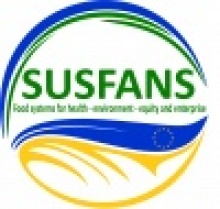The role of seafood in healthy and sustainable diets
The role of seafood in healthy and sustainable diets is complex. It is the most traded food commodity, has vastly different environmental sustainability, is essential in countries with undernourishment but being exported to developed countries where it is being promoted as a healthy and environmentally sound choice. In a public report due in September we intend to illustrate this complexity for defining optimized diets for EU citizens. The purpose of the study is to make an indepth analysis of current drivers of EU seafood production (aquaculture and fisheries) and how Food and Nutrition Security (FNS) related to seafood could be strengthened. Through literature review and data compilation, a general overview and understanding of the sector as it looks like today is provided, identifying variables and metrics for assessing seafood FNS for the EU and discussing needs for improved seafood FNS of the EU.
Some basic facts related to seafood in the EU:
- EU seafood production (farmed and wild-caught) contributes to 3% of the world supply. Globally, half of the production volume is farmed, whereas in the EU, only 20% comes from aquaculture.
- The dominating type of wild-caught seafood is small pelagics (mainly herring, sprat and mackerel). Farmed species mainly comprises of bivalves (predominantly mussels) and salmonids.
- Spain is the largest producer in both volume and value of wild-caught and farmed seafood. Other large fishing producers (in volume) are Denmark, France and the UK; in terms of value, France, Italy and the UK are important.
- Tuna, salmon and cod are the most consumed seafood items (Figure 1). The EU citizen prefers to eat wildcaught seafood, with only 25% coming from aquaculture.
- Many EU countries show high seafood consumption, on average 25 kg per year. This places the EU citizen as having the fifth highest seafood consumption in the world. With limited availability of wild fish stocks, the EU is therefore highly dependent on seafood imports.
The self-sufficiency rate (ratio between own production and consumption) has been stable around 45% in the latest estimates (2008-2012).
The research is part of WP4 deliverable D4.2 (drivers of fisheries and aquaculture production in the EU)
EU citizens’ seafood consumption per capita in 2012. Data from Facts and figures on the Common Fisheries Policy. Basic statistical data. 2016 Edition. ISSN 1977-3609.


Comments
Add new comment